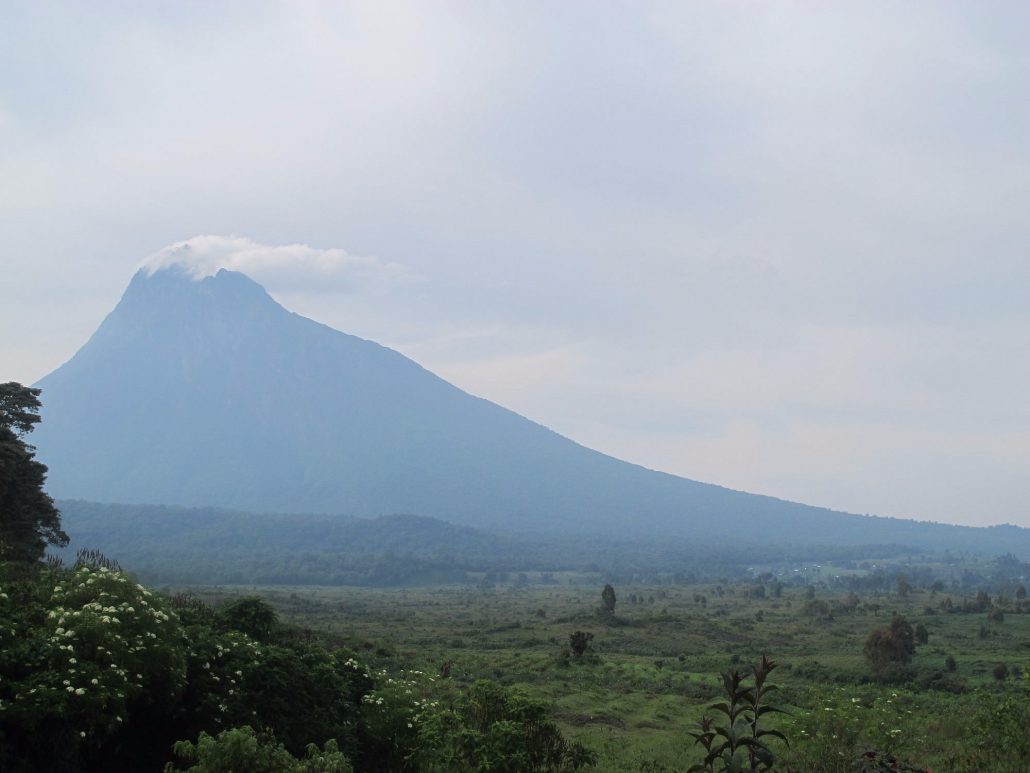Tourism in the Virunga Mountains, Rwanda
The Virunga Mountains, an iconic chain of eight volcanoes straddling the borders of Rwanda, Uganda, and the Democratic Republic of Congo, are one of the most captivating destinations in Africa.

In Rwanda, this breathtaking region is home to Volcanoes National Park, a sanctuary for some of the world’s most endangered wildlife and a hub for eco-tourism. With its rugged peaks, lush vegetation, and abundant biodiversity, the Virunga Mountains are not just a geographical marvel but also a beacon of conservation and sustainable tourism.
A Paradise for Wildlife Enthusiasts
The Virunga Mountains are perhaps best known as the natural habitat of the endangered mountain gorilla. Over half of the world’s mountain gorilla population resides in the dense forests of Volcanoes National Park, making Rwanda one of the premier destinations for gorilla trekking. This unique activity allows visitors to observe these majestic creatures up close, witnessing their social dynamics, playful behaviors, and familial bonds. Guided treks led by experienced rangers ensure that the experience is both safe and respectful to the gorillas and their environment. The revenue generated from gorilla trekking permits is reinvested into conservation programs and community development, ensuring a sustainable approach to tourism.
Aside from mountain gorillas, the Virunga Mountains are home to other fascinating species, including golden monkeys, elephants, buffaloes, and an array of birdlife. Birdwatchers flock to this region to spot rare and endemic species such as the Rwenzori turaco and Shelley’s crimson-wing. The region’s rich biodiversity and unique landscapes make it a paradise for nature enthusiasts and photographers alike.
Adventure and Exploration in the Virungas
For adventurers, the Virunga Mountains offer unparalleled opportunities for hiking and exploration. Among the most popular trails is the hike to Mount Bisoke, a dormant volcano with a stunning crater lake at its summit. The trek, which takes approximately six hours, rewards climbers with breathtaking views of the surrounding landscapes and an intimate encounter with the park’s flora and fauna.
For those seeking a more challenging experience, Mount Karisimbi, the highest peak in the Virungas at 4,507 meters, offers a two-day trek that tests endurance and determination. The climb passes through bamboo forests, alpine meadows, and volcanic rock formations, culminating in an unforgettable sunrise view from the summit. These hiking experiences provide not only physical challenges but also opportunities to connect with nature on a deeper level.
Cultural Connections
Tourism in the Virunga Mountains also offers a chance to immerse oneself in Rwanda’s rich cultural heritage. Local communities living near the park have embraced tourism as a means of sharing their traditions and livelihoods with visitors. Through cultural tours, tourists can experience traditional Rwandan dance, music, and storytelling. Craft cooperatives allow visitors to purchase handmade souvenirs, such as woven baskets and carved wooden figures, which directly support the local economy.
Additionally, the nearby town of Musanze serves as a gateway to the Virunga Mountains and offers vibrant markets, delicious local cuisine, and warm hospitality. Visitors can participate in farm tours, learning about Rwandan agriculture and sampling fresh produce, including the region’s famous coffee. This fusion of natural and cultural tourism makes the Virungas an enriching experience for travelers.
Conservation and Sustainable Tourism
The Virunga Mountains stand as a testament to Rwanda’s commitment to conservation and sustainable tourism. Efforts to protect the mountain gorillas and their habitat have not only saved this species from extinction but also transformed Rwanda into a global leader in eco-tourism. Strict regulations, such as limiting the number of daily gorilla trekking permits, ensure minimal impact on the environment and the animals.
Revenue from tourism has been instrumental in funding anti-poaching initiatives, scientific research, and community projects. By engaging local communities in conservation efforts, Rwanda has fostered a sense of ownership and pride among its people, ensuring the long-term protection of the Virunga ecosystem.
Virunga Mountains Trekking Routes
On the Rwanda side of the Virunga Mountains, there are several trekking routes, each offering unique experiences for nature enthusiasts, adventurers, and wildlife lovers. These trails are primarily located within Volcanoes National Park, which serves as a gateway to exploring the Virunga’s breathtaking landscapes and remarkable biodiversity.
Gorilla Trekking Routes
Volcanoes National Park is renowned for its mountain gorilla trekking, with several designated routes leading visitors into the dense forest to meet these magnificent creatures. Each route corresponds to different gorilla families, and visitors are assigned a family based on fitness levels and preferences. The trails vary in difficulty, with some requiring shorter walks and others involving more strenuous hikes through rugged terrain. These treks are led by expert guides and trackers, ensuring that visitors have an unforgettable and safe experience while respecting the gorillas’ natural habitat.
Mount Bisoke Crater Lake Trail
The Mount Bisoke trekking route is one of the most popular hiking trails in the Virunga Mountains. This trail leads to the summit of the dormant volcano, where a stunning crater lake awaits. The hike takes approximately six hours round trip, passing through lush bamboo forests and afro-alpine vegetation. It’s a moderately challenging trek that rewards hikers with breathtaking views of the surrounding landscape and opportunities to spot wildlife along the way.
Mount Karisimbi Trek
For seasoned adventurers, the Mount Karisimbi trek is a challenging yet rewarding experience. At 4,507 meters, Mount Karisimbi is the highest peak in the Virunga Mountains and the fifth-highest in Africa. This two-day trek involves camping overnight on the mountain and ascending through varied ecosystems, including bamboo forests, heath zones, and volcanic rock formations. The journey to the summit is demanding, but the panoramic views and sense of accomplishment make it one of the most exhilarating routes in the region.
Golden Monkey Trekking
Another unique trekking route in the Virunga Mountains is the golden monkey trekking trail. These treks are less strenuous compared to gorilla trekking and focus on finding and observing the endangered golden monkeys. The trail winds through the bamboo forests of the lower slopes, offering close encounters with these playful and vibrant primates. This experience is perfect for those who want to explore the park’s biodiversity without undertaking a rigorous hike.
Dian Fossey Tomb and Karisoke Research Center Trail
This trail is a tribute to the legendary primatologist Dian Fossey, who dedicated her life to studying and protecting mountain gorillas. The trek leads to her tomb and the site of the Karisoke Research Center, nestled in the lush forest between Mount Bisoke and Mount Karisimbi. The hike takes about three to four hours and offers insight into Fossey’s groundbreaking work and the history of gorilla conservation in the Virungas.
Each trekking route in the Virunga Mountains provides a distinct experience, allowing visitors to connect with Rwanda’s extraordinary landscapes and wildlife. Whether you’re drawn to the thrill of reaching a volcanic summit or the intimacy of meeting mountain gorillas in their natural habitat, the trekking options in this region cater to all levels of adventure.
Conclusion
The Virunga Mountains are more than just a travel destination—they are a symbol of Rwanda’s natural beauty, cultural richness, and conservation success. Whether it’s trekking through misty forests to meet a family of gorillas, hiking to the summit of a volcano, or connecting with the warm and vibrant communities, the Virunga Mountains offer an unforgettable journey that blends adventure, nature, and culture. As Rwanda continues to invest in eco-tourism and infrastructure, the Virungas will remain a shining example of how tourism can be a force for good, benefiting both the environment and the people who call this incredible region home.
